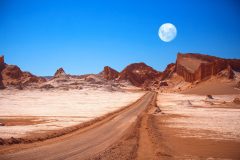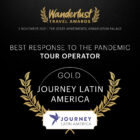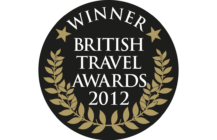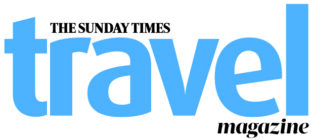Private Journeys
Off the beaten track Argentina: Remote Puna adventure
13 days from £5,450pp
(based on two people sharing & excluding flights)
Essentials
-
Tour info
-
Country info
-
What's included
Tour info
Altitude
A small minority of visitors may suffer temporarily from altitude sickness. Symptoms vary; most common are mild headaches, slight nausea and breathlessness. You need to take things easy on the first day travelling from Purmamarca to Tolar Grande and resist the temptation to jump out of the vehicle every 5 minutes to take pictures. The conventional advice is to avoid drinking alcohol and eat sparingly the first day over 3,000m, fortunately meals on this trip are not overly rich.
Transport
Domestic flights are by scheduled jet. The vehicle used from Salta to Purmamarca and up into the Puna is a Toyota Hilux or similar, a 4WD pick-up which can accommodate 4 guests and a driver but we recommend that three is the maximum number for a comfortable trip. For other (paved) roads and transfers, normal 2WD cars are used.
Accommodation
Accommodation in the Puna is simple, the two small inns in Tolar Grande and El Peñon are cosy and comfortable considering their remoteness. Occasionally it may be necessary to use alternative, very basic accommodation. Food is simple throughout the Puna region. In Buenos Aires, Salta and Cafayate accommodation is in mid-range or upper-mid range hotels.
Meals
Breakfast daily, lunch day 5, 10, full board days 6-9.
Guides
We carefully select our local partners, some of whom we have worked with for over 25 years. Their English-speaking guides understand the expectations of our clients very well, and are consistently singled out for praise by the latter on their return.
Your experienced, qualified driver-guide on the Puna expedition is also a great source of information relating to the history, geology and geography of the area. There are only a small handful of guides equipped to take on this expedition with visitors.
Summary Of Nights
13 days, 12 nights: Buenos Aires 2; Salta 2; Purmamarca 1; Tolar Grande 2; El Penon 2; Cafayate 2; Buenos Aires 1.
Budget
The Puna expedition is full board, on days 6-9 your only living expenses should be drinks. Elsewhere, a budget of around US$50-70 per day should cover the cost of meals not included in the holiday itinerary, drinks and the odd souvenir. Eat at the best restaurants in cities and you will pay considerably more.
Currency
The unit of currency in Argentina is the Argentine peso.
How To Take It
For our latest currency advice for Argentina please see our FAQs section.
Tipping
Tips are expected and local guides often rely on their tip as a significant proportion of their income.
Most service industry workers will expect a tip of some kind and so it is useful to have spare change for hotel porters, taxi drivers and the like. It is common to leave 10 – 12% in restaurants.
Your driver-guide on the Puna expedition is also a great source of information relating to the history, geology and geography of the area. There are only a handful of suitably qualified driver/guides sufficiently competent and experienced to undertake this journey and you will no doubt take this into account when you come to showing your appreciation at the end of the trip.
Insurance And Documents
Travel insurance is essential.
Details of our recommended policy can be found on our Travel Insurance page.
Airport Taxes
If you have purchased your flights through Journey Latin America, the international departure tax is usually included in the ticket.
Trip Suitability
This holiday incorporates is an expedition in the true meaning of the word. You are setting off into a virtually uninhabited wilderness with unmade roads and little or no infrastructure. This is one of South America’s epic road journeys. You will be travelling with an experienced English-speaking guide, well acquainted with the conditions and the route, and able to entertain you with anecdotes and acquaint you with the region’s history, geography and geology.
Owing to the unpredictability of the conditions, or bearing in mind your preferences, the itinerary is for guidance only, and changes may have to be made without notice. The expeditionary nature of this journey is part of its appeal, and a flexible attitude will help you fully to enjoy the experience.
Travel here is far from monotonous – the views change frequently and there’s almost no-one else around. Without mobile phone or internet access, you feel an exhilarating sense of isolation from the outside world. You’ll spend four full days exploring the Puna, travelling for several hours a day (with many stops for views, photos, and strolls).
Altitude combined with remoteness, lack of medical facilities and simple accommodation makes the Puna suitable for resilient travellers. The start point Salta is 1,200m and end point Cafayate 1,650m. However, almost all travel in-between is at altitudes of 3,000m – 4,500m. Sleeping altitude in Tolar Grande, Antofagasta de la Sierra and El Peñon is 3,500m.
Climate
In Buenos Aires, October to November and March to April see temperatures between 15 and 25°C and a good deal of sunshine. January to February is hot, with temperatures over 30°C. Winter (June-August) sees daytime temperatures dip to 10-12°C.
Salta has plenty of sun throughout the year but it can be cool in winter, but it is drier with little rain falling Apr-Oct. Jan-Feb is the wettest period.
Much of the journey will be at altitudes of over 4,000m; the climate is equally extreme. There are sharp differences in temperature between night-and day-time, sun and cloud. Very cold nights are most likely in the height of the dry season (July-August) with sub-zero temperatures, but days can still be mild and sunny. The Puna can be visited year round but there are rare occasions when extreme weather can cause disruption due to floods or snow. This is mostly in the peak of the Andean summer rains (January-March) and the middle of winter (July-August). The best time to visit overall is September to December and April to June.
Clothing And Special Equipment
In the southern hemisphere summer (Dec-Mar) it will be hot in both the cities – Buenos Aires and Salta – and the countryside, so take loose-fitting light clothing for maximum comfort.
If you plan to go to good restaurants or out on evening entertainment trips, you might bring something a bit smarter as well (although formal attire will not be required).
With regular changes in altitude and weather coming from the Andes, you need to come prepared for all seasons at all times of the year. In the Puna you may experience anything from a day of snow flurries and bitterly cold gale-force winds and a spectacular still day of warm sunshine in the low 20s. Nights are always cold with sub-zero temperatures possible. Layers are essential – a thermal long sleeved base layer won’t go amiss – in any case bring a warm jacket, hat, gloves. Sunscreen and sunglasses are essential.
Please get in touch with the office before departure if you have any doubts.
Vaccinations
Preventative vaccinations are recommended against the following: polio; tetanus; typhoid. For specific requirements you must consult your GP.
You can also find helpful information on the Masta Travel Health website.
Visas
Holders of a full British passport do not require a visa, although passports must be valid for at least 6 months after the trip begins. Anyone with a different nationality should enquire with us or check with the relevant consulate.
If flying to the US, or via the US you will need to fill in your online ESTA application.
Country info
When is the best time to visit Argentina?
Argentina is so large it’s always a good time to go somewhere. The southern hemisphere summer is the reverse of our own, with Dec-Feb being high summer in Patagonia. Spring (Oct-Nov) and Autumn (Mar-Apr) can still be very pleasant and are quieter. While summers in the lake district are reliably warm and sunny, the further south in Patagonia you go the more unpredictable the weather. In Winter (June-Sept) some hotels in Patagonia close, while others stay open for skiers. Buenos Aires, Mendoza and Córdoba enjoy a Mediterranean-type climate, with cool winters and very warm summers. North-west Argentina (Salta and Jujuy) enjoy sunshine and warm temperatures year-round but are influenced by altitude and the high Andes, with occasional cold snaps (June-Sept) and a rainy season (Jan-Feb). Iguazú Falls and Misiones has a subtropical climate, although it can be chilly July-Sept.
For more detailed information visit our When To Go section.
What is the official language of Argentina?
The official language of Argentina is Spanish.
What is Argentina's official currency?
The official currency of Argentina is the Argentine Peso.
Although cards have become more widely accepted, cash remains useful in Argentina so don’t rely solely on your cards. Taking funds in a mix of formats (a supply of US$ cash to convert into Pesos locally, along with your cards) is a sensible plan. In Buenos Aires and main tourist hubs you should have few problems paying by card but in more remote areas often only cash is accepted. You’ll also need cash for tips (eg if you pay for a restaurant meal with a card, tips are always left in cash). When changing money, denominations of US$50 and US$100 are usually preferred and you should make sure your notes are in perfect condition. Although ATMs are available, local ATM fees are high and the amount you can take out is lower than in the UK. We tend to avoid them.
We think it’s a good idea to keep an eye on Argentina’s exchange rates before you go. In addition to the official (BNA) rate of exchange for converting your US Dollars to Pesos, Argentina also uses a parallel exchange rate for foreign tourists (MEP). This is about 15% better than the official rate. Some casas de cambio will automatically apply the better tourist rate when changing your money. Others will only apply the official (BNA) rate. Rates used to process credit/debit card transactions can vary between card issuers, but you should find you get something between the official and tourist rates. Check your statement.
Try not to end up with a lot of leftover Pesos at the end of your time in Argentina, as it is difficult to change them to other currencies. You should be able to spend them at the Duty Free shop at Buenos Aires airport.
Please note that given the changeable situation with the Argentine economy, currency matters can change at short notice.
What's the time difference between Argentina and UK?
The time difference between Argentina and UK is GMT -3 hrs. Sometimes daylight saving is observed in the summer, from Sep/Oct to early Mar, but not every year.
Do I need a visa for Argentina?
Holders of a full British passport do not require a visa, although passports must be valid for at least 6 months after the trip begins. Anyone with a different nationality should enquire with us or check with the relevant consulate.
If flying to the US, or via the US you will need to fill in your online ESTA application.
What vaccinations do I need for Argentina?
Please check Travel Health Pro for information on health recommendations and vaccinations for the destinations you are visiting. Please note that many Latin American countries require proof of vaccination against Yellow Fever if you have recently travelled to another country where Yellow Fever is present.
Which other countries combine well with Argentina?
Chile, accessing the country by crossing the Andes over one of several scenic passes: from Salta in the northwest to the Atacama Desert, from Mendoza to Santiago, via the lakes crossing from Bariloche to Puerto Varas in the lake district and from El Calafate to Torres del Paine in Patagonia; Brazil, via the land crossing at Iguazú.
What are the festivals and other cultural or sporting events in Argentina?
• Tango Festival: Buenos Aires, August.
• Polo Open: Buenos Aires province, weekends in November.
• Gaucho Festivals: The pampas, early November.
How do I adapt to the altitude in Argentina?
Whilst a typical holiday in Patagonia presents no challenges with altitude, Argentina’s north-western provinces offer a taste of the high Andes with some spectacular road trips on offer. Travel to high altitude can cause mountain sickness and even if you feel fighting fit it’s important to take things easy and stay hydrated (drink plenty of water, avoiding alcohol and caffeine) as you get used to the thin, dry air. You may initially notice a headache, dizziness or breathlessness and this usually improves with acclimatisation. If you are pregnant or taking the contraceptive pill, have a medical condition such as heart or lung condition, anaemia, asthma, high blood pressure you should seek the advice of your GP before booking. We also recommend you check your travel insurance covers travel to high altitude. If you’re taking the family, remember small children may be less capable of communicating altitude-related symptoms effectively: keep an eye on them too. Rest assured we will plan your itinerary carefully, taking into account any time spent at altitude. If you have any questions or concerns about altitude please speak to your travel expert.
Further advice on travel to altitude is available on www.travelhealthpro.org.uk
Inspired by this trip
Our exciting range of articles on Latin America explore everything from iconic destinations and lesser-known cultural gems to delicious traditional recipes. You’ll also find exclusive travel tips, first-hand client reviews and the chance to get your personal questions answered by our travel experts.
Papagaio
Your edit for Latin American inspiration
Our exciting range of articles on Latin America explore everything from iconic destinations and lesser-known cultural gems to delicious traditional recipes. You’ll also find exclusive travel tips, first-hand client reviews and the chance to get your personal questions answered by our travel experts.
View Extraordinary Inspiration




































